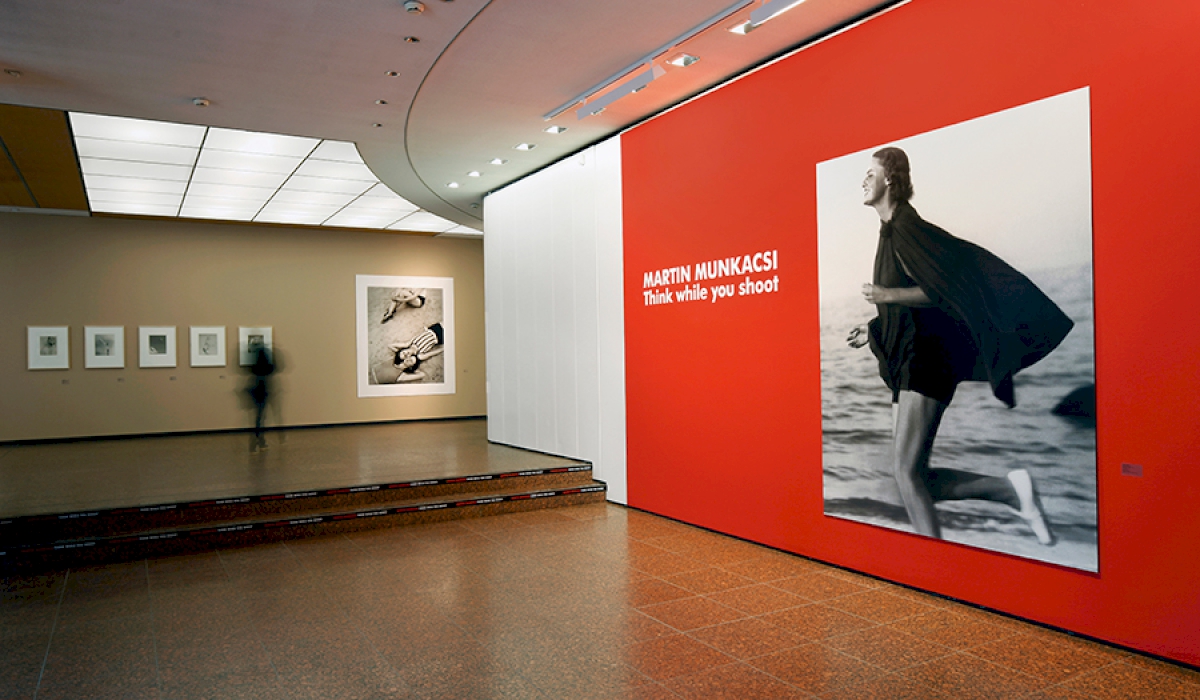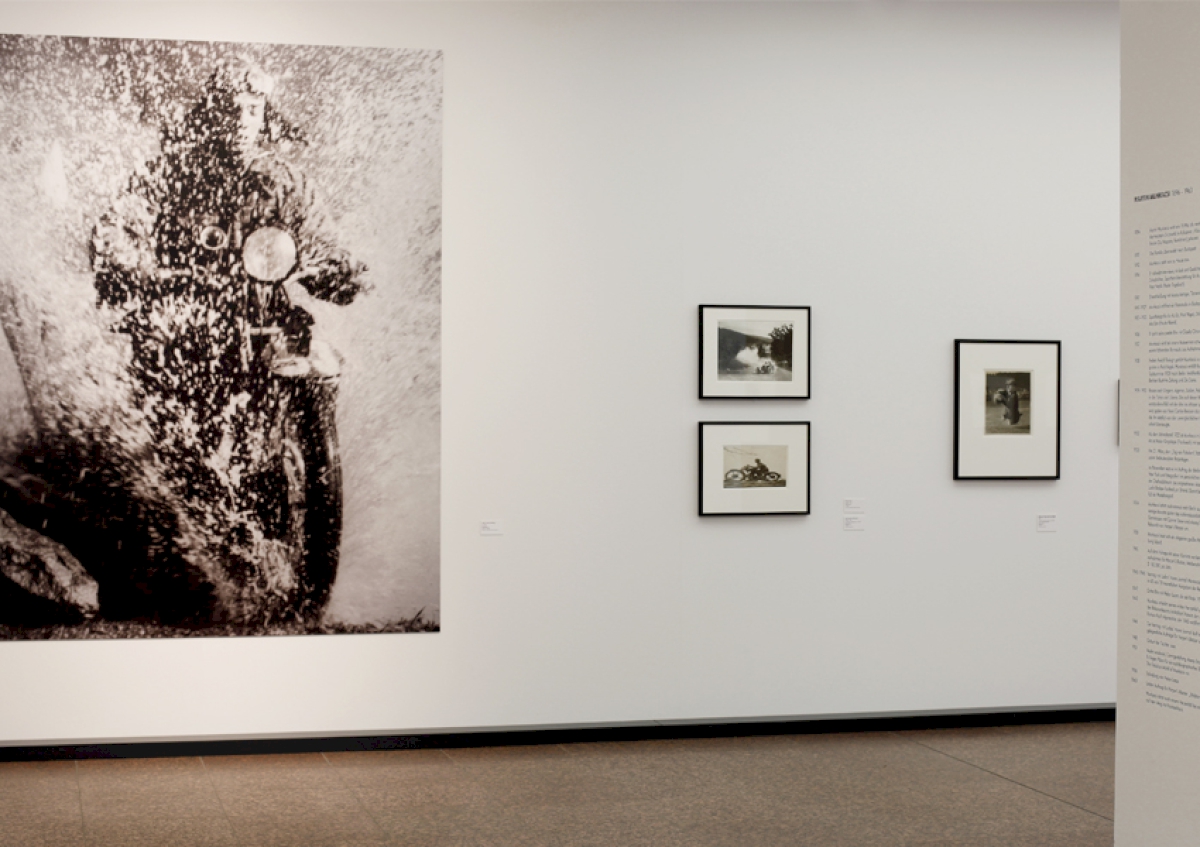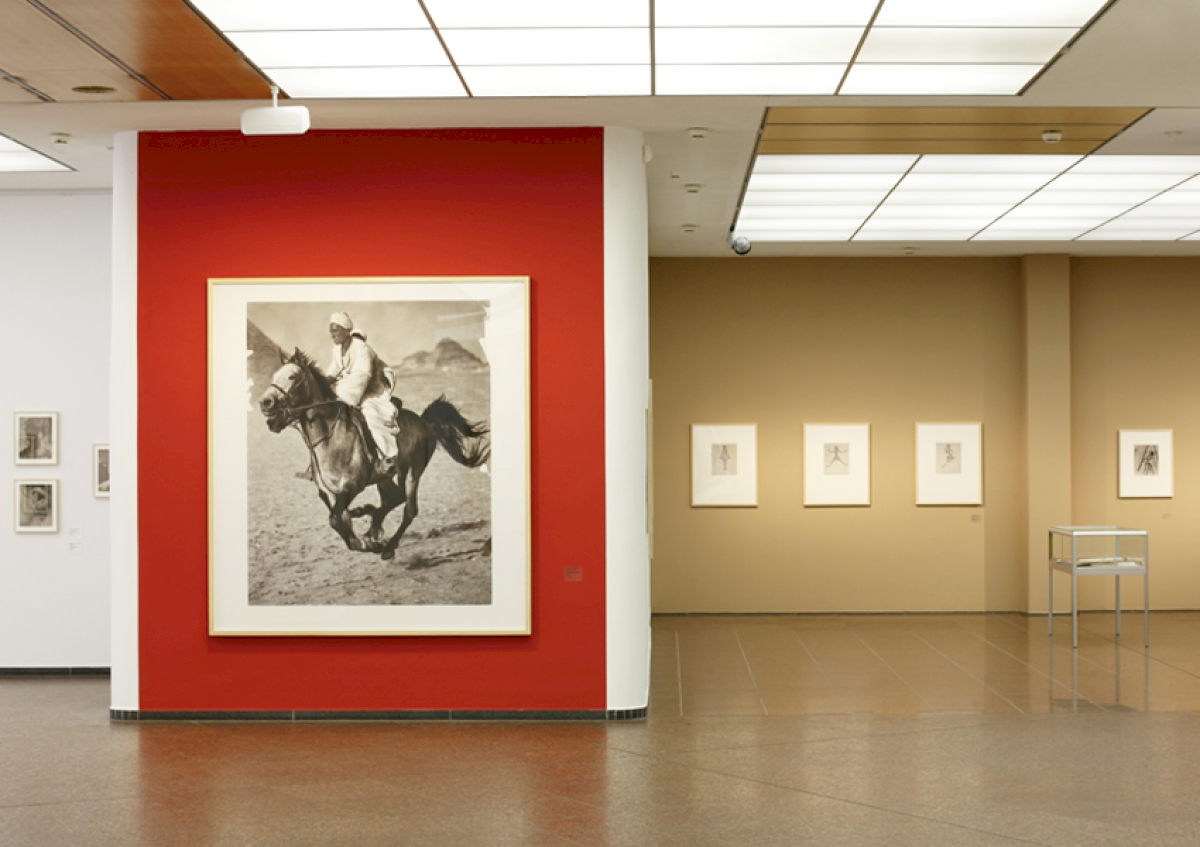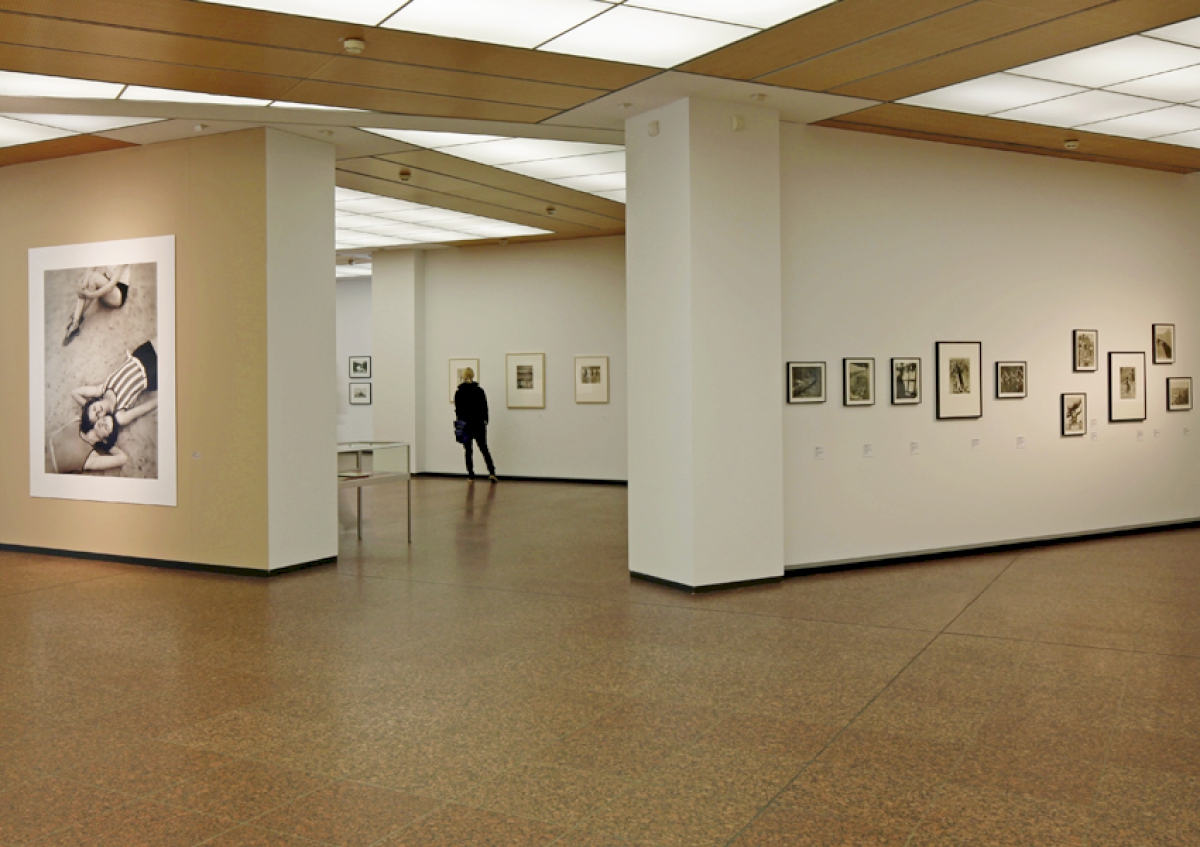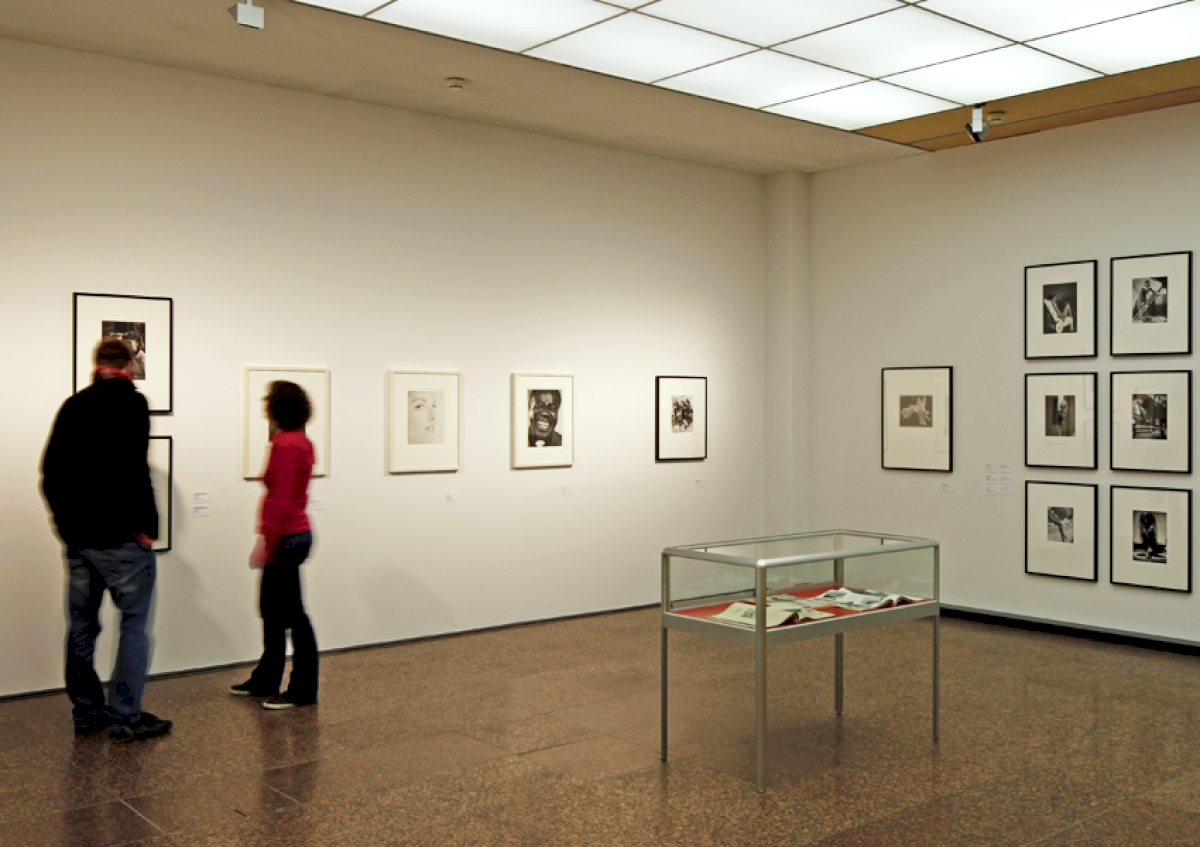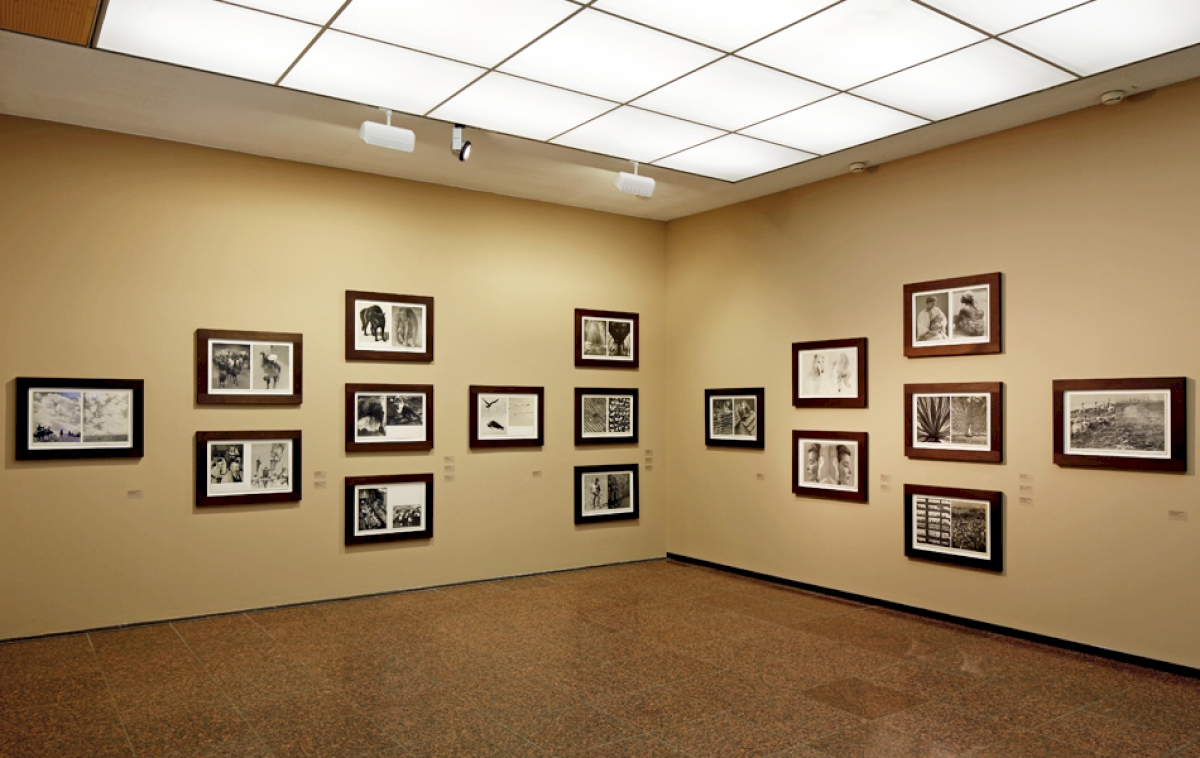Retrospektive. Martin Munkacsi. Think while you shoot!
Martin Munkacsi (1896 – 1963) undisputedly ranks among the leading photographers of the 20th century. Born in Hungary, he helped shape modern photojournalism in its early days and brought action to what had, up to then, been a static medium. Munkacsi combined journalistic exactitude with a high formal-aesthetic ideal. He was one of the most prominent advocates of the “New Vision.” His fashion photos were seminal; as a sports photographer, he remains unsurpassed.
This exhibition brings together photographs from Munkacsi’s archives that were, until now, strewn all over the globe. It contains photos from all his creative phases, thereby documenting an exciting, glamorous, and contradictory epoch that was obsessed with technology. Curated by F.C. Gundlach in 2005 as the inaugural exhibition at the Haus der Photographie in the Deichtorhallen in Hamburg, the retrospective Martin Munkacsi – Think while you shoot will make its final stop at the Kunstfoyer der Versicherungskammer Bayern in Munich from 23 February until 22 May 2011. Around 280 works will be on display, including portraits of Fred Astaire, Katharine Hepburn, Greta Garbo, Joan Crawford, Marlene Dietrich, Max Schmeling, Louis Armstrong, Frida Kahlo, and Diego Rivera.
Fred Astaire danced on his toes for him; ladies with flowing dresses strolled across the beach for him – Munkacsi introduced motion into the static photography of the twenties. The ardently expressive Hungarian is regarded as an unequaled sports photographer and photojournalist, as a revolutionizer of fashion photography, and as the embodiment of modernity.
“Think while you shoot,” is how Martin Munkacsi summarized his photographic credo for Harper’s Bazaar in 1935. These four words perfectly characterize his way of working: his photographs seem spontaneous, casual, dynamic, and often exude an uninhibited lust for life. They bear witness to a gift that sets Munkacsi apart from most other photographers: his intuitive ability to grasp the moment. He was able, in the wink of an eye, to estimate movements and sense fleeting configurations, in order to be in the right place at the right time and press the shutter release.
Munkacsi’s feel for dynamics is already apparent in his early work for the Hungarian newspaper Pesti Napló. In 1928 he departs Hungary en route to Berlin, the lively European metropolis and epitome of the “Roaring Twenties.” There he experiences the luck of the self-taught: the Ullstein Verlag makes him senior photographer of the Berliner Illustrirte Zeitung, an illustrated magazine with the largest circulation in the world at that time. Munkacsi’s repertoire is widely diversified: it ranges from sports, to news photography, to fashion. 1933 is a year of change for Munkacsi as well. Bustling, avant-garde Berlin degenerates into a marshalling area for the SA and SS under the National Socialists. The Ullstein Verlag is “Aryanized,” the Jewish editor-in-chief Kurt Korff and Director Kurt Safranski are fired. In May 1934 Munkacsi also departs Germany in order to start anew in the US. There he will reach the zenith of his career, publishing his works in Harper’s Bazaar, Life, and Ladies’ Home Journal. But he will also fall from this great height.
Since 2005, the exhibition has traveled from the Haus der Photographie in the Deichtorhallen, Hamburg, to the Martin-Gropius-Bau in Berlin, the International Center of Photography (ICP) in New York, the Museum of Modern Art in San Francisco, the Moscow House of Photography, and to the Ludwig Museum Budapest. It has wrested one of the most influential photographers of the 20th century from oblivion and has received glowing international praise from visitors and the press alike.
We would like to express our thanks to Munkacsi’s daughter Joan Munkacsi (1948-2008), the Ullstein photo archive in Berlin, the Stiftung F.C. Gundlach, and to the Howard Greenberg Gallery in New York. Without their support, the retrospective and the catalog would have been inconceivable. Thanks are also due to the Steidl Verlag in Göttingen for their work in preparing the illustrated catalog that accompanies the exhibition.
Catalog
ISBN 978-3-86521-099-9 (German edition)
ISBN 978-3-86521-269-6 (English edition)
Curator
F.C. Gundlach

